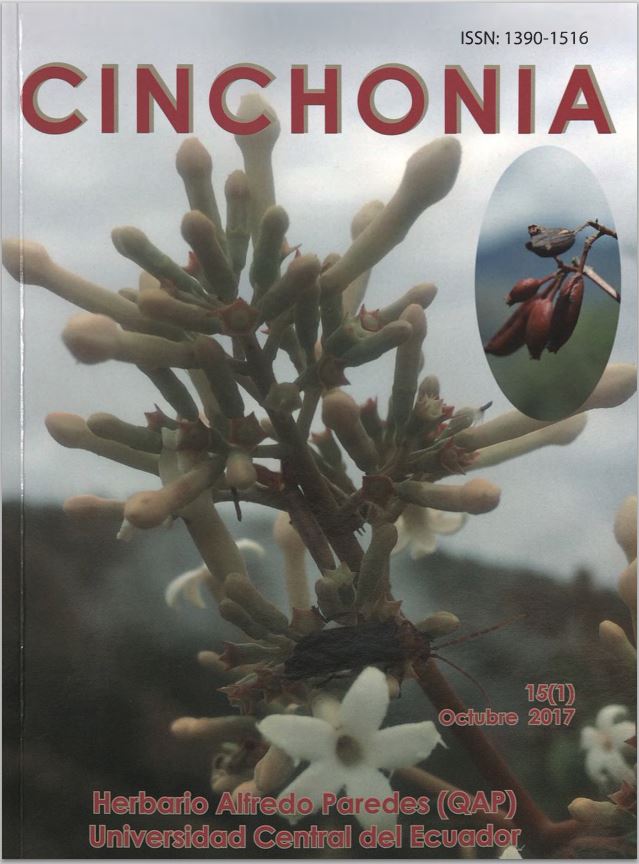Estudio Preliminar de Fitoplancton en la Laguna de Colta, Chimborazo-Ecuador
Main Article Content
Abstract
The phytoplankton study conducted in the month of December 2015 in Colta Lake, located in Colta Canton, Chimborazo Province, between San Lorenzo de Sicalpa and Santiago de Quito parishes, met the following objectives: 1) Determine the gender of microalgae. 2) Evaluate the biological quality of the water in the lake using Maila et al.: Fitoplancton, Laguna Colta Cinchonia Vol. 15 #1, 2017 103 the phytoplankton organisms as indices of bioindication.3) Establish the potential application fields of the most common algae genera found in the body of water. The study included five analysis stations located in the north center of the lake. The method used in the field consisted of two techniques: dragging and filtering in a net of 30-micrometer pores. In the analyzed samples, a total of 1758 individuals grouped within 29 genera, 27 families, 21 orders and 5 divisions were recorded. The most representative genera correspond to Oocystis (993 individuals), Spirogyra (299 individuals), and Chlorella (237 individuals). Applying the Shannon-Wiener Diversity Index, the diversity categories are reported: High Diversity (tourist zone), Medium Diversity (grazing area and populated area), and Low Diversity (reed area and center of the lake). According to the Organic Pollution Index proposed by Palmer at the genus level, the body of water studied presents two of three categories: Low Organic Pollution (grazing area, populated area, reed area and center of the lake), and intermediate organic pollution (tourist zone). With respect to the Sorensen Similarity Index, values range from 0% (populated zone - reed zone) and 42% (reed zone - center of the lake). Regarding the potential use of dominant genera, Chlorella has a higher probability of use in the communities surrounding the lake.

